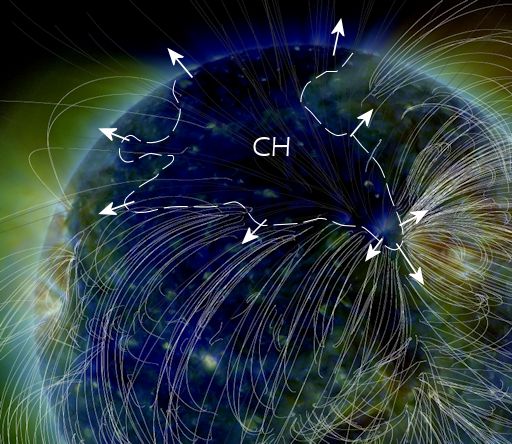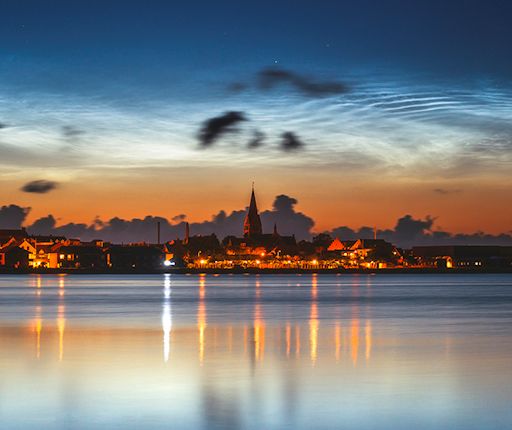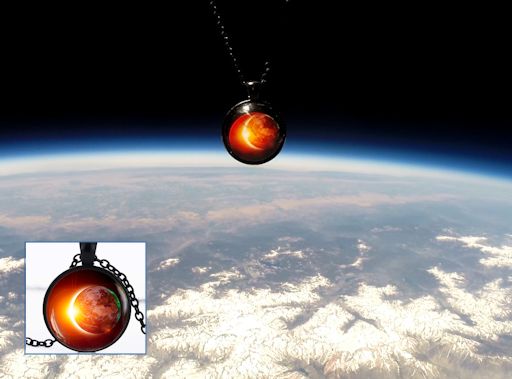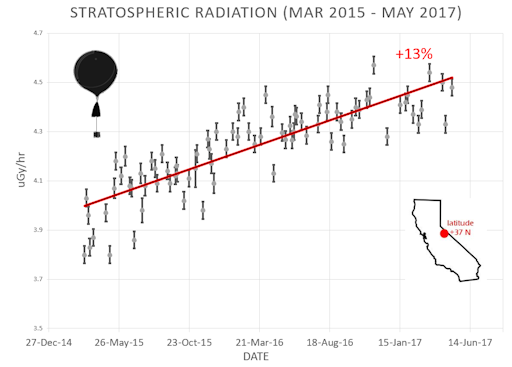 | | | Switch to: Europe, USA, New Zealand, Antarctica Credit: NOAA/Ovation  Planetary K-index Planetary K-index
Now: Kp= 1 quiet
24-hr max: Kp= 1 quiet
explanation | more data
Interplanetary Mag. Field
Btotal: 1.6 nT
Bz: 0.3 nT north
more data: ACE, DSCOVR
Updated: Today at 2350 UT  Coronal Holes: 19 Jul 17 Coronal Holes: 19 Jul 17 
Solar wind flowing from this northern coronal hole could reach Earth on July 21. Credit: NASA/SDO.  Noctilucent Clouds NASA's AIM spacecraft, which monitors NLCs from space, recent moved into a new orbit around Earth. Daily data are currently unavailable while the spacecraft's pointing settles. Switch view: Ross Ice Shelf, Antarctic Peninsula, East Antarctica, Polar Updated at: 02-24-2017 17:55:02 Noctilucent Clouds NASA's AIM spacecraft, which monitors NLCs from space, recent moved into a new orbit around Earth. Daily data are currently unavailable while the spacecraft's pointing settles. Switch view: Ross Ice Shelf, Antarctic Peninsula, East Antarctica, Polar Updated at: 02-24-2017 17:55:02  SPACE WEATHER
NOAA Forecasts | | Updated at: 2017 Jul 18 2200 UTC FLARE | 0-24 hr | 24-48 hr | CLASS M | 05 % | 01 % | CLASS X | 01 % | 01 % |  Geomagnetic Storms: Geomagnetic Storms:
Probabilities for significant disturbances in Earth's magnetic field are given for three activity levels: active, minor storm, severe storm Updated at: 2017 Jul 18 2200 UTC Mid-latitudes | 0-24 hr | 24-48 hr | ACTIVE | 20 % | 20 % | MINOR | 05 % | 05 % | SEVERE | 01 % | 01 % | High latitudes | 0-24 hr | 24-48 hr | ACTIVE | 15 % | 15 % | MINOR | 25 % | 25 % | SEVERE | 30 % | 30 % | | | |  | | | | | | | | | | | Lights Over lapland is excited to announce that Autumn Aurora Adventures are available for immediate booking! Reserve your adventure of a lifetime in Abisko National Park, Sweden today! | | | BLANK SUN: Giant sunspot AR2665 has rotated onto the far side of the sun. It is gone, leaving behind ... nothing. The face of the sun is blank. With the sunspot number back at zero, the sun's march toward Solar Minimum has resumed. Free: Solar Flare Alerts NORTHERN CORONAL HOLE: A hole in the sun's atmosphere has opened up and it is spewing solar wind into space. NASA's Solar Dynamics Observatory is monitoring the structure, which sprawls across nearly half of the sun's northern hemisphere: 
This is a coronal hole (CH), a region where the sun's magnetic field peels back and allows solar wind to escape. A stream of solar wind flowing from this hole is expected to reach Earth on July 21st, bringing a 40% chance of geomagnetic activity. High-latitude sky watchers should be alert for auroras when the solar wind arrives. Free: Aurora Alerts Realtime Aurora Photo Gallery NOCTILUCENT CLOUDS VS. AURORAS: On July 17th, during a geomagnetic storm, Ruslan Merzlyakov of Nykøbing Mors, Denmark, went to the beach after dark, hoping to see some patches of green in the sky. Instead, he witnessed a spectacular display of electric blue: 
"I did not see any auroras, but there were some very nice noctilucent clouds (NLCs)," says Merzlyakov. At about the same time in Germany, Laura Kranich caught them both. "I photographed noctilucent clouds with auroras shimmering overhead," she says. "It was a space weather duet."
The auroras have faded as Earth exits the wake of a CME. However, the noctilucent clouds seem to be intensifying. On July 17th and 18th, European observers have seen the silvery ripples of frosted meteor smoke as far south as France. Sunset sky watchers should be alert for more. Observing tips: Look west 30 to 60 minutes after sunset when the sun has dipped ~10o below the horizon. If you see luminous blue-white tendrils spreading across the sky, you may have spotted a noctilucent cloud. Realtime Noctilucent Cloud Photo Gallery SOLAR ECLIPSE SPACE PENDANTS: Would you like to support our Solar Eclipse Balloon Network? Here's one way: Buy a space pendant. This solar eclipse-themed necklace flew to the stratosphere on July 2, 2017, attached to the payload of an Earth to Sky Calculus space weather balloon: 
The payload contained more just like it. If you buy one now for $79.95, we will fly it back to the stratosphere during the Great American Solar Eclipse on August 21, 2017, where it will be enveloped by the Moon's cool shadow above our launch site in Oregon. No additional charge! Just make a note in the COMMENTS BOX of the shopping cart: "Please fly my pendant into the eclipse!" Each pendant comes with a greeting card showing the jewelry in flight and telling the story of its journey to the stratosphere and back again. More items from the edge of space may be found in the Earth to Sky Store. All proceeds support atmospheric radiation monitoring and hands-on STEM education. Far Out Gifts: Earth to Sky Store
All proceeds support hands-on STEM education Realtime Space Weather Photo Gallery
Realtime Noctilucent Cloud Photo Gallery
Every night, a network of NASA all-sky cameras scans the skies above the United States for meteoritic fireballs. Automated software maintained by NASA's Meteoroid Environment Office calculates their orbits, velocity, penetration depth in Earth's atmosphere and many other characteristics. Daily results are presented here on Spaceweather.com. On Jul. 19, 2017, the network reported 46 fireballs.
(43 sporadics, 2 July Pegasids, 1 alpha Capricornid)  In this diagram of the inner solar system, all of the fireball orbits intersect at a single point--Earth. The orbits are color-coded by velocity, from slow (red) to fast (blue). [Larger image] [movies] Potentially Hazardous Asteroids ( PHAs) are space rocks larger than approximately 100m that can come closer to Earth than 0.05 AU. None of the known PHAs is on a collision course with our planet, although astronomers are finding new ones all the time. On July 19, 2017 there were 1803 potentially hazardous asteroids.  | Recent & Upcoming Earth-asteroid encounters: | Asteroid | Date(UT) | Miss Distance | Velocity (km/s) | Diameter (m) | | 2017 NT5 | 2017-Jul-14 | 1.1 LD | 20.3 | 94 | | 2017 MR8 | 2017-Jul-15 | 3.3 LD | 6.9 | 36 | | 2007 MB4 | 2017-Jul-16 | 14.5 LD | 9.6 | 107 | | 2017 NS5 | 2017-Jul-17 | 13.4 LD | 22.7 | 242 | | 2017 NX5 | 2017-Jul-18 | 10.2 LD | 13.4 | 51 | | 2017 BS5 | 2017-Jul-23 | 3.1 LD | 5.8 | 54 | | 2011 CC22 | 2017-Aug-04 | 15.5 LD | 18.4 | 186 | | 2014 OA339 | 2017-Aug-13 | 12.3 LD | 10 | 47 | | 3122 | 2017-Sep-01 | 18.5 LD | 13.5 | 5376 | | 2014 RC | 2017-Sep-11 | 15.1 LD | 8.9 | 16 | Notes: LD means "Lunar Distance." 1 LD = 384,401 km, the distance between Earth and the Moon. 1 LD also equals 0.00256 AU. MAG is the visual magnitude of the asteroid on the date of closest approach. | | Cosmic Rays in the Atmosphere |
Readers, thank you for your patience while we continue to develop this new section of Spaceweather.com. We've been working to streamline our data reduction, allowing us to post results from balloon flights much more rapidly, and we have developed a new data product, shown here: 
This plot displays radiation measurements not only in the stratosphere, but also at aviation altitudes. Dose rates are expessed as multiples of sea level. For instance, we see that boarding a plane that flies at 25,000 feet exposes passengers to dose rates ~10x higher than sea level. At 40,000 feet, the multiplier is closer to 50x. These measurements are made by our usual cosmic ray payload as it passes through aviation altitudes en route to the stratosphere over California. What is this all about? Approximately once a week, Spaceweather.com and the students of Earth to Sky Calculus fly space weather balloons to the stratosphere over California. These balloons are equipped with radiation sensors that detect cosmic rays, a surprisingly "down to Earth" form of space weather. Cosmic rays can seed clouds, trigger lightning, and penetrate commercial airplanes. Furthermore, there are studies ( #1, #2, #3, #4) linking cosmic rays with cardiac arrhythmias and sudden cardiac death in the general population. Our latest measurements show that cosmic rays are intensifying, with an increase of more than 13% since 2015: 
Why are cosmic rays intensifying? The main reason is the sun. Solar storm clouds such as coronal mass ejections (CMEs) sweep aside cosmic rays when they pass by Earth. During Solar Maximum, CMEs are abundant and cosmic rays are held at bay. Now, however, the solar cycle is swinging toward Solar Minimum, allowing cosmic rays to return. Another reason could be the weakening of Earth's magnetic field, which helps protect us from deep-space radiation. The radiation sensors onboard our helium balloons detect X-rays and gamma-rays in the energy range 10 keV to 20 MeV. These energies span the range of medical X-ray machines and airport security scanners. The data points in the graph above correspond to the peak of the Reneger-Pfotzer maximum, which lies about 67,000 feet above central California. When cosmic rays crash into Earth's atmosphere, they produce a spray of secondary particles that is most intense at the entrance to the stratosphere. Physicists Eric Reneger and Georg Pfotzer discovered the maximum using balloons in the 1930s and it is what we are measuring today. | | The official U.S. government space weather bureau | | | The first place to look for information about sundogs, pillars, rainbows and related phenomena. | | | Researchers call it a "Hubble for the sun." SDO is the most advanced solar observatory ever. | | | 3D views of the sun from NASA's Solar and Terrestrial Relations Observatory | | | Realtime and archival images of the Sun from SOHO. | | | from the NOAA Space Environment Center | | | a proud supporter of science education and Spaceweather.com | | | fun to read, but should be taken with a grain of salt! Forecasts looking ahead more than a few days are often wrong. | | | from the NOAA Space Environment Center | | | the underlying science of space weather |  | Beautyz for top beauty products reviews and their buying guides |  | Reviews here can help you to pick up best memory foam mattresses. | | | These links help Spaceweather.com stay online. Thank you to our supporters! | | | | | | | | |  | |  |   | ©2017 Spaceweather.com. All rights reserved. This site is penned daily by Dr. Tony Phillips. | |

